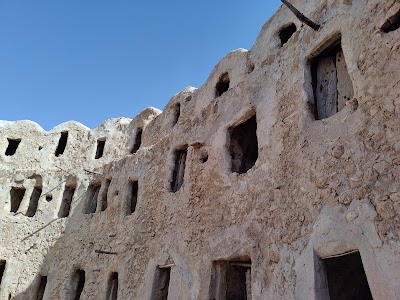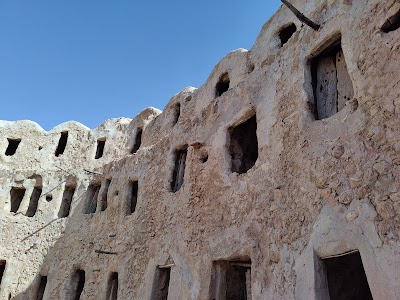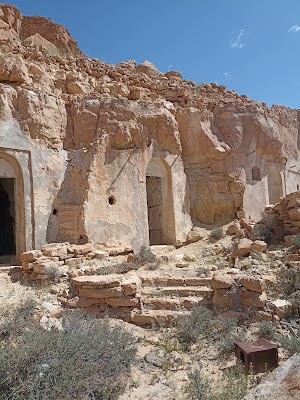Qasr al-Haj (قصر الحاج)
Related Places
Overview
Qasr al-Haj, situated in the Kufra District of Libya, is a captivating historical site that offers a unique window into the past. This ancient granary is not merely a storage facility; it stands as a testament to the ingenuity and communal spirit of the Berber people who constructed it. Let’s embark on a journey through the history, significance, and intriguing facts that make Qasr al-Haj a must-visit destination.
A Journey Through History
Constructed in the 12th century, Qasr al-Haj is an impressive circular fortress that primarily served as a granary. Built by the local Arab tribe, the Bani Hilal, it was designed to store grain and olive oil—essential commodities in a region where food security could be precarious. The Berber community relied on this structure to shield their crops from invaders, thieves, and the harsh desert climate. Each family had its own compartment, reflecting a sophisticated system of communal ownership and cooperation.
Architectural Marvel
The architecture of Qasr al-Haj is nothing short of remarkable. This massive circular structure features a central courtyard surrounded by approximately 114 individual storage rooms arranged over two levels. Accessed by narrow stone staircases that spiral around the building, this design optimizes storage space and facilitates efficient management of goods. The thick mud-brick walls play a crucial role in maintaining a cool interior temperature, vital for preserving food in the arid desert environment.
Social and Cultural Significance
One of the most intriguing aspects of Qasr al-Haj is its social and cultural significance. It symbolizes the communal lifestyle of the Berber people, with each family having a designated storage space that fosters a sense of collective responsibility and interdependence. The site also served as a gathering place for villagers to meet, trade, and socialize, reinforcing communal ties. The granary emerged as a pivotal hub of village life, underscoring the importance of cooperation and shared resources for survival in the harsh desert.
A Time Capsule
Visiting Qasr al-Haj today offers a unique opportunity to step back in time. The granary has been remarkably well-preserved, allowing visitors to wander through its corridors and imagine the bustling daily life that once filled its walls. Although now largely silent, the echoes of history envelop the site, providing a palpable sense of the past. Many storage compartments still bear the names of the families who once relied on this fortress for sustenance, etched into the walls, creating a direct connection to the individuals who inhabited this space.
Architectural Heritage
Moreover, Qasr al-Haj exemplifies traditional Berber architecture. The use of local materials and construction techniques reflects a profound understanding of the environment and an ability to adapt to its challenges. The simplicity and functionality of the design are both aesthetically pleasing and a reminder of the ingenuity of the Berber people. This architectural heritage is a vital part of Libya's cultural identity, offering valuable insights for historians and architects alike.
Natural Beauty of Kufra District
Visitors to Qasr al-Haj can also enjoy the stunning natural scenery of the surrounding Kufra District. Renowned for its stark desert landscapes, oases, and unique flora and fauna that have adapted to the harsh conditions, the region invites exploration. Engaging with this raw beauty provides a deeper understanding of the environment in which this remarkable granary was built.
A Compelling Destination
For tourists interested in history, architecture, or simply experiencing a different way of life, Qasr al-Haj is a compelling destination. The site serves as a window into a world that has largely disappeared, yet whose legacy continues to shape the region. By visiting, travelers contribute to the preservation of this cultural heritage, ensuring that future generations can also appreciate its significance.
Conclusion
In conclusion, Qasr al-Haj in the Kufra District of Libya is more than just an ancient granary. It embodies the resourcefulness and communal spirit of the Berber people, showcases architectural brilliance, and links us to a bygone era. Whether you are a history buff, an architecture enthusiast, or an adventurous traveler, Qasr al-Haj promises a rich and rewarding experience that is sure to leave a lasting impression.






